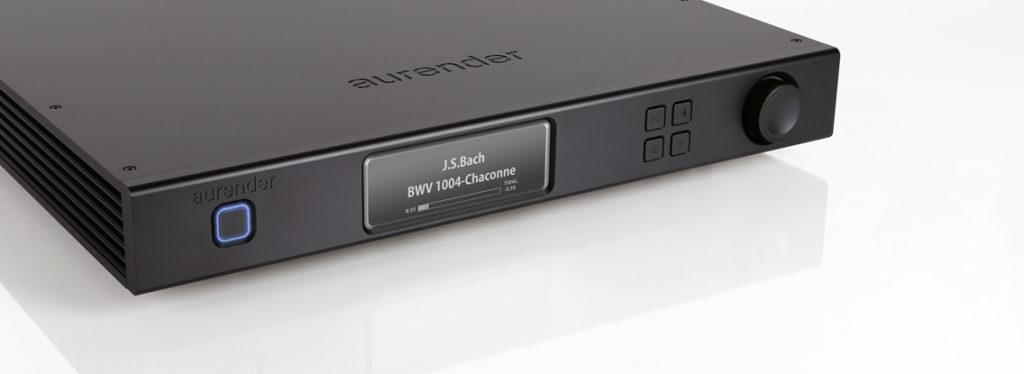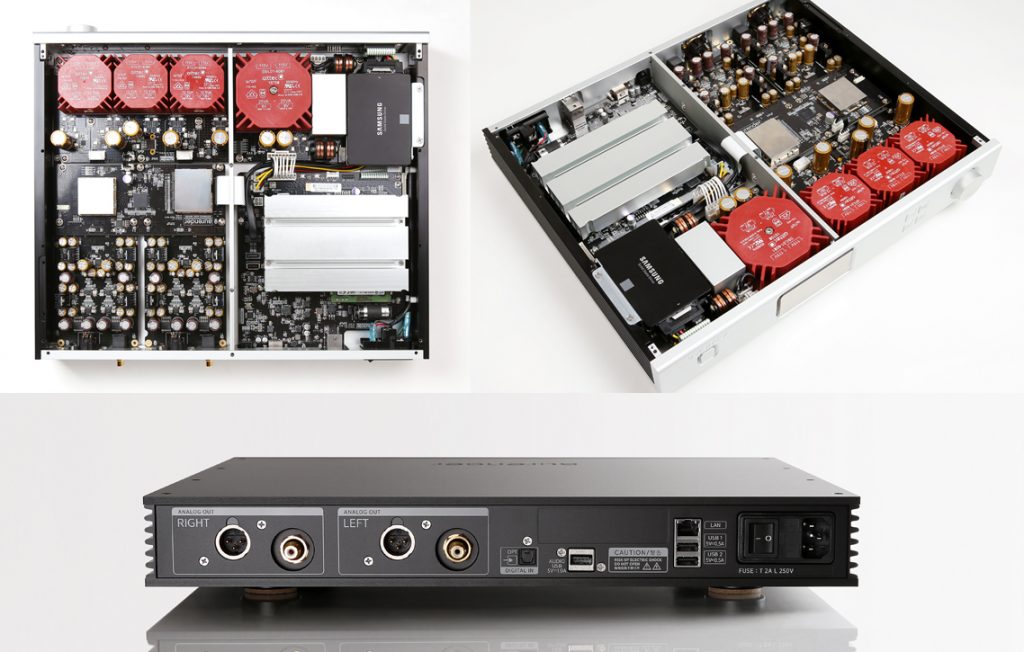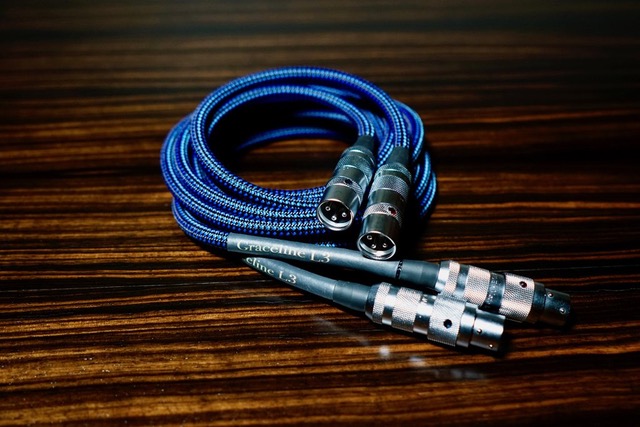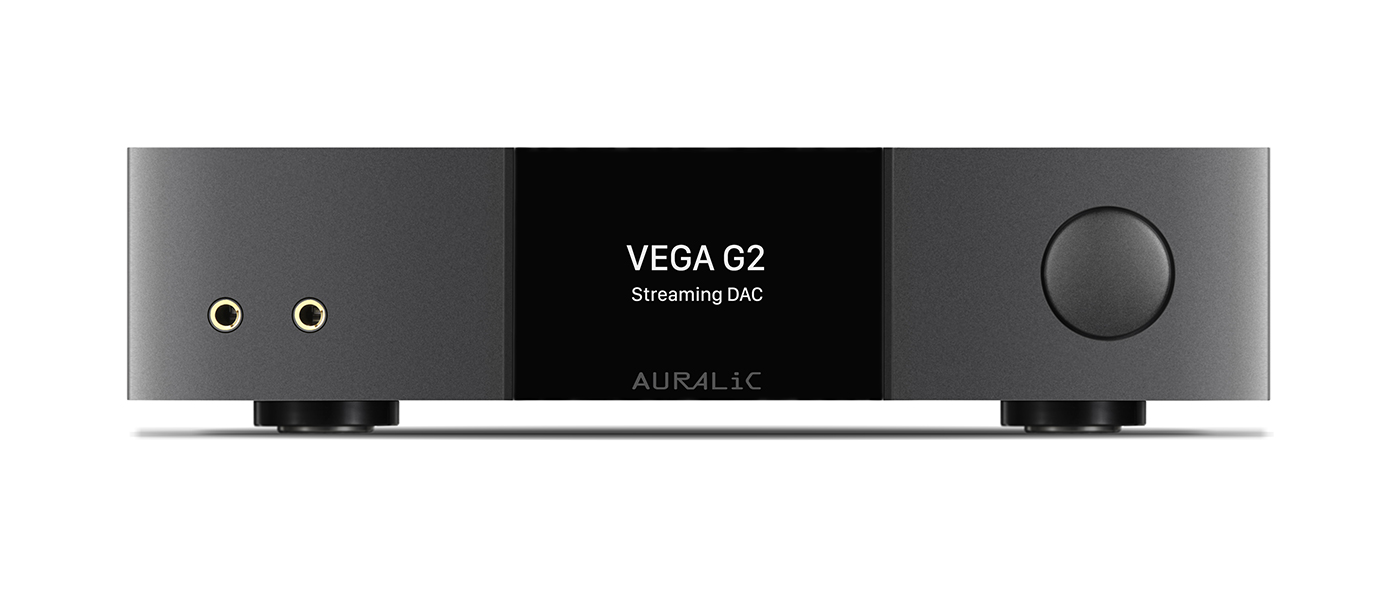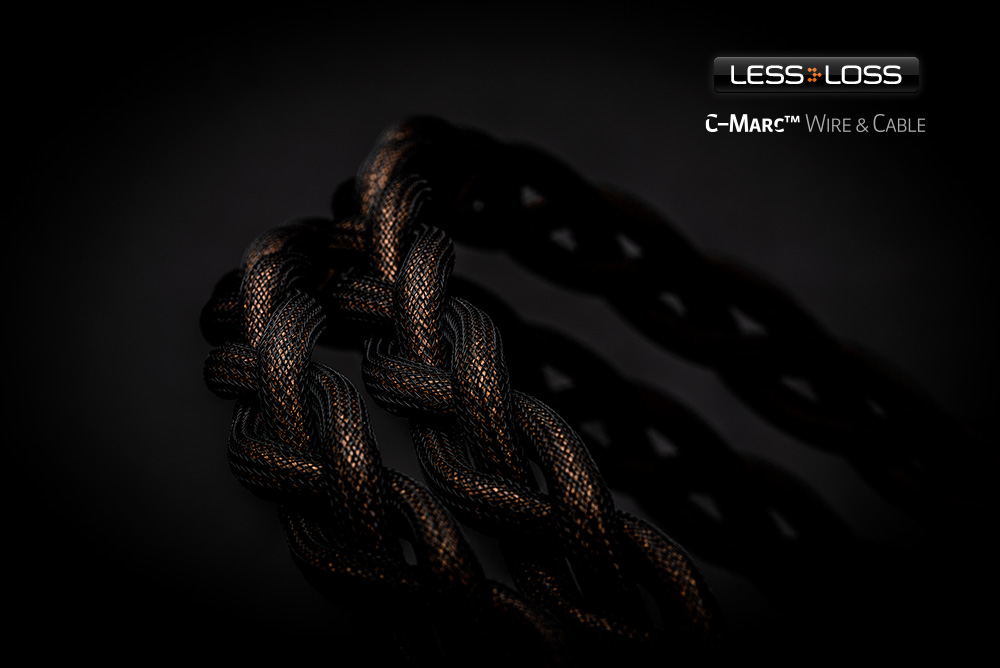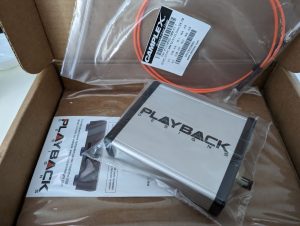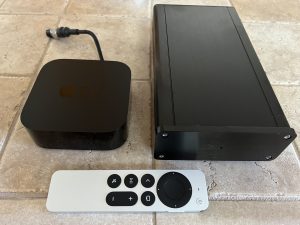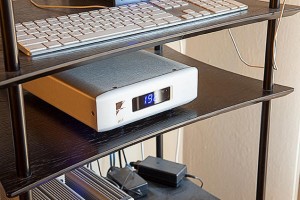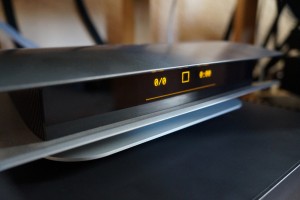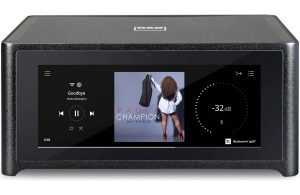"Hey, we have the Aurender A10 in; interested in writing a post script to my review?" spoke our fearless leader, Dave Clark. "Sure, why not", I simply replied. Having spent time with various digital bits and players over the past year or so, including dCS Rossini, Meridian's stupid great Explorer2 (with full Roon and MQA compatibility), the AURALiC Polaris, and of course my trusted Playback Designs MPS-5, I figured that digital streaming and playback technology has matured to a point where it would genuinely pique my interests.
The first thing you notice with the Aurender is the premium and rather nicely finished case; the all-aluminum chassis looks as though it was designed with purpose and style in mind; no rough edges mar the well-sculpted front; each of the buttons are shaped with pleasant touch points. The main OLED display features a large enough font that it can easily be read across the room, and a selector knob with a solid feel sits to the right of the display. Aurender's logo has been cut, nay, machined into the top panel and gives the A10 a elegant high-end feel. The back is rather minimalist, featuring both RCA and XLR outputs, S/PDIF Optical, Gigabit Ethernet, and two USB output ports (the Aurender can send digital bits to an external DAC via these ports; they do not function as USB input). The latest and greatest PCM/DSD playback options are guaranteed by dual mono AK4490 DAC chips, which also handle native (full) unfolding of MQA data. A built in 4TB storage drive rounds out the impressive feature set—mind you, purchasing the A10 won't set you back tens of thousands of dollars either as the A10 retails for a fairly affordable (in high-end terms, anyway) $5499.
For the past decade or so, I have felt that the digital equipment and playback market is ripe for disruption. Over the past years, and seemingly from nowhere, many new companies have entered what was a fairly stale market just a few years ago. Mytek, AURALiC, Aurender, exaSound, KEF LS50 Wireless (!) et al., have sprung onto the scene at prices that generally undercut the big boys whilst offering more features and, in some cases, if not equal to, then pretty darn close to the big boy's sound quality. The A10 is no different here, with a healthy feature set that will no doubt find use in many a high-end digital playback system.
Setup is pretty simple actually, though not entirely without its own quirks. Download Aurender's iOS Conductor app, connect your A10 via Ethernet to your network, and, generally speaking, off you are to enjoying digital bliss. More or less, that is. Your mileage may vary; personally, while I had no specific issues connecting the A10 to my network, there are times—randomly—when the A10 seems to connect and then immediately disconnect from the network. Given that you are at the mercy of the Conductor app's built in setup functionality, there doesn't seem to be too much in the way of troubleshooting if you do run into issues. In that case, powering the unit off, then back on, seems to do the trick ninety percent of the time, though on occasion it didn't. For the record, my home's WiFi is in the hands of eero's professional grade "mesh" network. If you haven't already done so, I strongly urge you to consider dropping coin and getting behind the eero Whole-Home Wifi System for all your network needs. I have dropped my trusted old Apple Airport Extreme setups (3 of them) in favor of eero and haven't looked back since. Three beautifully made eero WiFi hotspots cover my house and all of my network issues... and variable download speeds are now a thing of the past (this is not a paid endorsement or "review" of eero; simply stating what works really well in chez K).
Sonically and musically, the A10 is a hit. Tight, firm, low-end bass grabs both the Wilson's Alexx as well as YGs Sonja 1.2 (review forthcoming); dynamic swings are properly scaled and rendered. On any of my favorite electronica cuts, I keep reminding myself that hey, digital does, in fact, at times sound rather great. Fundamentally, the A10 plays bass lines and dynamics as well as anything I heard. Listening to Tidal's ever growing lineup of MQA files, now numbering several hundred albums in total, I am impressed with the perceived increase in resolution, overall sonic impact, and ability to retrieve detail more so than I remember some other digital front ends I've heard. To be fair, the A10 is the first main, full-sized, digital product I have had in my home that does, in fact, natively unfold MQA to its true resolution, thus, comparisons to other digital gear has to be taken with a grain of salt when discussing MQA files. Since neither of my other resident digital players support full MQA unfolding, at most I am hearing 24/96, since that is what Tidal's desktop app is capable of without the necessary hardware decoder. My only other resident MQA capable device is the little Meridian Explorer2, which has served me well for its portability and fully featured spec sheet. Thus, comparing apples to apples, both Aurender and Meridian offer up the increased—perceived—resolution of MQA'd files. Whereas the Meridian spotlights, to a degree or two, midrange and treble regions, it is the absolutely potent bass and dynamic transparency that gives the nod to the Aurender. Given the rather dramatic price difference, this isn't surprising, though I have to highlight that the Meridian kicks quite into higher price regions all other things being equal. It's quite the little "super" DAC.
Having said that, I am still not sure what I'm really hearing with MQA. Meridian isn't doing themselves any favors by keeping a rather convoluted marketing message in play, thus adding to the perception that all isn't what it's supposed to be. Kudos to Arian Jansen, of SonoruS fame, for providing an educational background to MQA long before any other audio publication did. Don't get me wrong, I'm not an anonymous online troll—I think that MQA is an opportunity to rally around (yet) another new format, quirks and bugs and all. It remains to be seen where MQA will get to; discussing this very subject briefly with an industry insider last week brought to light that gent's great analogy of MQA being like video's 3D. Which is to say that in some limited ways it can be a great experience (like watching Gravity on a positively massive IMAX screen in 3D; one of the few films 3D really worked well with), but in most instances, will leave you feeling somewhat underwhelmed.
Aurender has done a great job getting their audio circuitry lined up to offer up a great sonic experience no matter the file format being served. Outside of Tidal, I have about 7TB of various hi res DSD/PCM tracks that I regularly enjoy listening to, and with the Aurender, sonically I found nothing to fault.
But this brings me to Aurender's Conductor app. For some time now I've been saying that software is the new hardware. What I mean by that is that we are living in an increasingly software-centric world that's driven by scalable hardware platforms. Being around the iOS world day in, day out (my day job!), I have grown to appreciate a genuinely great app ecosystem. Given that app developers monetize their app designs skills far more effectively and to a far higher dollar level on iOS than Android, it is a general fundamental truth that on equal terms, the iOS app will tend to be superior to its Android counterpart. This gap becomes ever more evident when using a tablet, read, iPad vs. some other Android tablet.
Given this backdrop, I can't help feeling that Aurender really missed a great opportunity with their Conductor app. Now look, app development isn't cheap or easy. Yes, Apple has made it fairly simple to develop world class apps, but that doesn't imply that every app developed for iOS will be great. But... Aurender's Conductor app—there really is no easy way of saying it—is rather weak in both UI and UX terms. Frankly, it's an app I would have expected five or seven years ago, but not in 2017. First, iOS ditched "skeumorphism" with iOS 7 (!) in 2013, which is to say, from the get-go Conductor app looks visually very dated. Second, the UX part of the app is unnecessarily complicated and confusing to boot. Third, as I noted previously, the app's stability leaves room for improvement. Fourth, while the app allows you to playback files from your attached NAS, it is a manual, repetitive process, because the app doesn't import your files, it rather allows you to select each file from the file viewer screen. And lastly, playback of Tidal files is quirky at best, with the UI again playing against you, rather than for you. My simple advice would be that given the resources required to redo/update the Conductor app, why not simply make the A10 (or other Aurender hardware) Roon compatible? Since Roon already did all the heavy lifting and has established itself as the defacto playback software of choice for many, it would seem easiest to focus efforts on what Aurender is good at, the excellent DAC/analog output section, and leave the rest to other partners and teams.
Let me close out by saying that the A10 proves terrific as a digital streamer/DAC; the sound quality is great, if not even excellent, especially given the price of the unit. What mars the experience for me is the Conductor app. Fortunately, there's a really easy fix for that: Roon—please!
A10
Retail: $5499
Aurender




